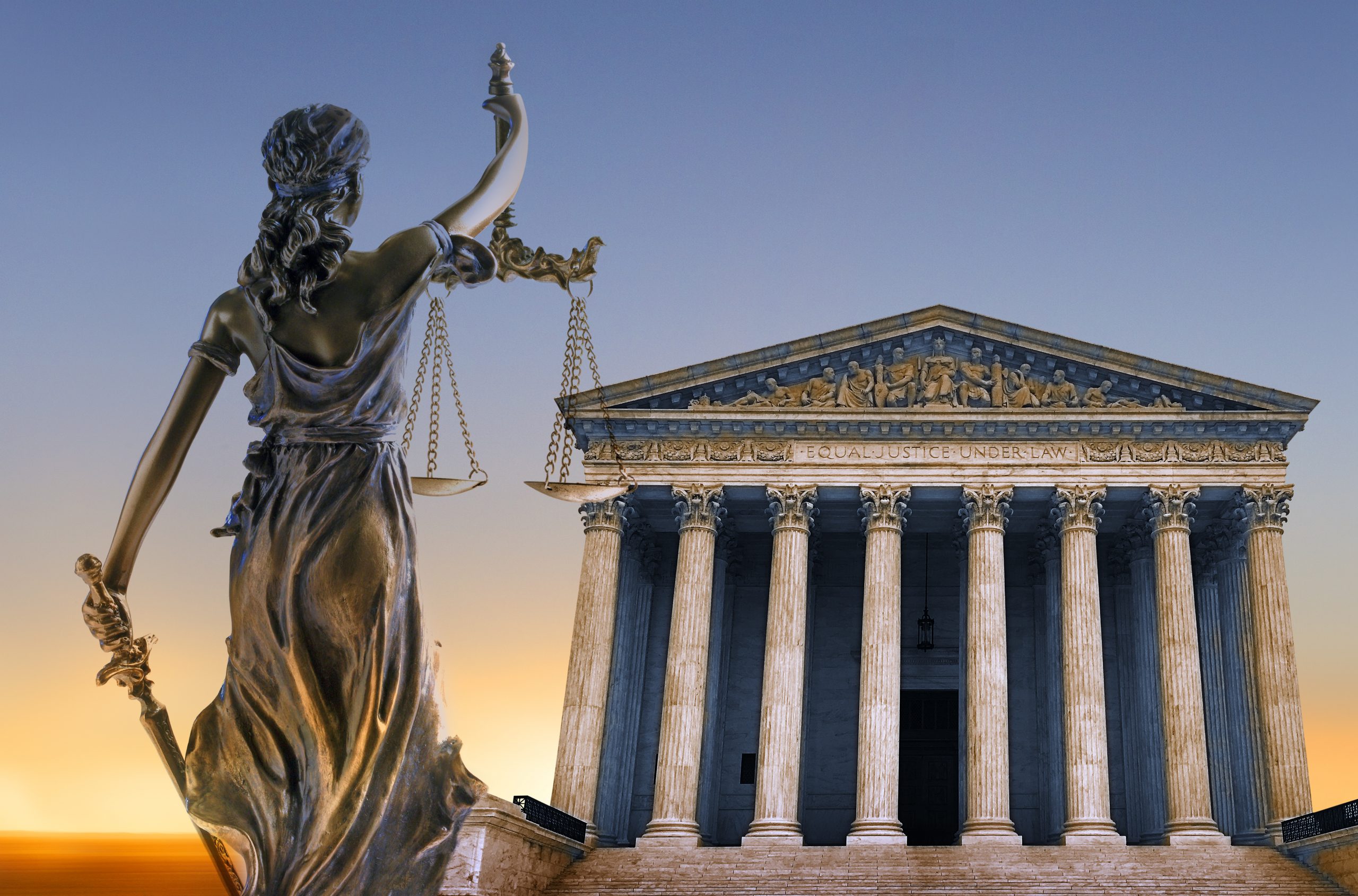The Claremont Institute's Center for the American Way of Life opens its doors.
A Better Legal Conservatism

Originalism is a fine theory, but we need stronger tools to overcome cultural disintegration.
In A Better Originalism, Hadley Arkes, Josh Hammer, Matthew Peterson, and Garrett Snedeker have written a manifesto against the current operation of the “legal conservative movement”— i.e., the socio-legal movement through which conservative lawyers, scholars, and judges have sought to create a right-ward shift in American law. In this powerful and oftentimes acerbic manifesto, Arkes et al. call for a “better originalism,” one that incorporates substantive moral values into how lawyers and judges interpret the Constitution’s original public meaning.
While I agree with much of their critique, and consider my own writing on the subject to be largely consonant with the thrust of their manifesto, I write here to detail the ways in which I believe the manifesto misses the mark. We don’t need a better originalism; we need a better conservatism.
Is Originalism Really the Problem?
According to the manifesto, natural law is inseparable from constitutional law, and constitutional interpretation therefore requires direct engagement with moral controversies. Originalism betrays a basic requirement of law, the authors argue, because originalism dictates that judges must abstain from engagement with moral controversies on issues that are not explicitly mentioned in the Constitution. The authors argue that this “not in the Constitution” mantra inclines conservatives to adopt a libertarian indifference towards various immoral activities, such as abortion and homosexuality.
The problem with this originalist posture is that it gives the Left free rein over legal morality. The authors thus urge conservative judges to refine their originalism so as to engage the Left on a moral plane. As the authors put it, judges should act “as statesmen anchored in enduring principles, with skills of prudent judgment, not as technocrats focused entirely on the text, with no attention to the underlying principles that give meaning to that text.”
The manifesto, however, overstates the technocratic narrowness of originalism. More particularly, it ignores the extent to which originalism has compounded and ramified over the last 30 years, so that is now a highly malleable methodology, to the point that it is accommodating even for liberal originalists and multicultural originalists. The originalism that the manifesto attacks—the rigid restraint of text and history—has been out of favor for more than 30 years. Almost no contemporary originalists reason the way that the early proponents of the theory did. To the contrary, contemporary originalists favor an approach largely consistent with the one endorsed by the manifesto—i.e., an approach that incorporates judicial conceptions of morality into the construction of constitutional text, including the guarantee of (what they call) natural rights.
In fact, the manifesto authors implicitly recognize the essential harmony between their preferred approach and contemporary originalism when they observe that the Supreme Court’s 1967 decision finding a right to interracial marriage was an expression of a natural law jurisprudence rather than originalism. That is likely true. And on top of the Loving case, we can add many other cases in which the Supreme Court has used the capacious language of the Fourteenth Amendment as a basis for imposing its moral understanding of equality and liberty against state and local governments.
The manifesto authors, however, neglect to inform the reader that no contemporary conservative judges or leading originalists disagree with this line of precedents. If Loving illustrates the gap between originalism and natural law, but just about all contemporary originalists defend and even embrace Loving, how is originalism the problem?
The truth is that originalism is not itself the problem, because for more than a generation the methodology has been sufficiently flexible to accommodate a variety of decisions seemingly inconsistent with the relevant constitutional text and history. Nevertheless, the authors use the supposed technocratic narrowness of originalism as a ground for proposing their own preferred legal theory—that of “common good” constitutionalism.
What’s Wrong with Common Good Constitutionalism?
A significant practical problem with the manifesto’s argument for common good constitutionalism is it ignores what Tom West has described as a distinction between form and matter in American constitutionalism. According to West, “natural rights and the laws of nature are the form of the founding, and the facts of colonial America are the matter,” and “[b]oth of them together—matter shaped by form—produced the American regime.”
The manifesto authors have proposed the proper form of American constitutionalism while ignoring the ways in which the relevant constitutional matter has changed over the last 200-plus years. To be sure, common good constitutionalism might have worked in 18th century America—when the nation consisted of 13 free and independent states, constituting roughly 4 million people who, as John Jay observed, were “descended from the same ancestors, speaking the same language, professing the same religion, attached to the same principles of government, very similar in their manners and customs.” In that America, federal courts, operating within their limited jurisdiction over a small and relatively homogeneous population, were arguably capable of transcending ordinary politics in pursuit of the “common good.”
But that is not the case in 21st century America, a consolidated union of 50 states, constituting nearly 100 times the size of the 1787 population, and a population bitterly divided by race, religion, and region. Our federal courts, armed with the Fourteenth Amendment, now exercise expansive jurisdiction over the most local affairs, such as how school boards and law enforcement agencies operate. And because our federal courts have taken on our most intimate political affairs, our federal courts accordingly reflect our political divisions, poignantly on display in the Supreme Court’s split decisions and contentious confirmation hearings. To think that, suddenly, as a result of an interpretive shift from originalism to common good constitutionalism, nine life-tenured, politically selected lawyers could magically restore order in this dysfunctional America is about as delusional as President Biden proclaiming that he could do so by fiat.
The hard truth is that there is only one way to restore order in this America, and that is to face our dis-order, not to continue down the hazardous path of seeking to juridicize it away.
Facing our dis-order requires confronting the core legal issue of our time—the homogenizing effect of government-enforced notions of individual emancipation and collective equity. When each individual is emancipated from the bonds of family, faith, and community, and each group is promised the equal station of another, the organic attachments and variations of human life—of husband and wife, parent and child, citizen and neighbor—are dissolved away in a singular progressive sludge.
Subjecting us all to the Supreme Court’s notion of the common good will only add more dissolvent to the mixture. Legal conservatives must therefore look to founding exemplars who stand for the disaggregating and differentiating force of kith and kin, not to the centrifugal force of the common good.
The manifesto authors, however, look to the great centralizers Chief Justice John Marshall and Alexander Hamilton as the way out of our predicament. These figures may have been necessary in the early 19th century, when the task was to build a nation out of 13 independent states. But they are decidedly not what we need now. Instead of needing law to build a nation, we now need law to defend voluntary associations and regional variations, as coagulates of faith, family, and community. Our times demand Patrick Henry and Spencer Roane, not more of John Marshall and Alexander Hamilton.
In other words, we don’t need a common good constitutionalism as much as we need an uncommon good constitutionalism—a constitutionalism that accounts for, rather than suppresses, what is and will likely remain uncommon among such a divided and diverse population.
Originalism Needs Better Legal Conservatism
The authors proceed the way that legal conservatives have operated for the last two generations—as though tinkering with a method of legal interpretation is the key to victory. So we have moved from strict constructionism in the 1960s, to original intent in the ’70s, to original public meaning in the ’80s, to new originalism in the ’90s, and now to a family of originalisms in the early 21st century.
In the meantime, while conservatives bicker over the right mode of constitutional interpretation, the nation’s illegitimacy rates have gone from roughly 5% to nearly 50%, so that the U.S. now leads the world in the rate of single-parent households. Unenforced borders and declining reproductive rates have transformed the nation’s demographics, so that the traditional ethnic majority has gone from roughly 90% to roughly 60%. And as the nation’s demographics have shifted, a virulent anti-white politics has emerged, to the point that our leading universities now celebrate rendering whites the most underrepresented part of the student body. Christianity has likewise experienced an unprecedented decline, so that for the first time a minority of Americans are members of a church. And as Christianity has waned, the U.S. has gone from being the leader of the free world to being the leader of the smut world, hosting about 60% of the world’s porn sites.
The manifesto authors do not shy from the seriousness of our political and constitutional moment. Indeed, they proclaim that we are “about to plunge into the gravest crisis of the regime since the Civil War.” But what is their solution to our 1860 moment? To propose a new constitutional theory. Nero’s fiddling may have been time better spent.
Legal conservatism does not need a better originalism. Rather, originalism needs a better legal conservatism. Legal conservatives must develop the three institutional ingredients that political scientists have identified as necessary for creating a successful socio-legal movement.
As Michael McCann has observed, for a social movement to use the judiciary as an agent for change, the social movement must frame a particular and concrete agenda in a way that employs existing legal norms. Because courts are constrained by judicial precedent, social movements often seek to show how precedents that seem adverse to their cause can be marshalled for their agenda, thereby using law, as Steven Teles has described, to shift “off the wall” claims to be “on the wall.”
The movement must have what Charles Epp has dubbed “support structures”—i.e., a critical mass of well-connected “rights-advocacy organizations, rights-advocacy lawyers, and sources of financing, particularly government-supported financing.” This is critical because courts are passive institutions—they require support structures to articulate, enforce, and develop norms as applied to real-life conflicts and controversies.
Finally, the movement must have in place a powerful electoral constituency. This is vital because courts are often reluctant to change legal norms unless they sense there is political momentum pushing for such change. And even if courts do initiate such a shift, it will not result in actual social change unless there is broad political pressure for executive and legislative bodies to support that agenda.
For nearly a century now, the legal Left has been successful in marshaling these three critical ingredients for achieving change through courts. Indeed, the Left has created extensive legal support structures—organizations like the NAACP, ACLU, and Lambda Legal Defense Fund—that have worked in concert with one another in developing the trajectory of American law by carefully selecting plaintiffs and strategically waging a series of lawsuits directed toward particular substantive goals.
Contrast that with how the Federalist Society, the principal organization on the legal Right, has operated. Instead of engaging in litigation, it has served as a debating society. Instead of mobilizing an electoral constituency, many of its leaders have ignored and even opposed the populist trajectory of American conservatism. And instead of seeking to advance a substantive agenda, it has sought to advance an interpretive methodology—namely, originalism in constitutional interpretation and textualism in statutory interpretation.
The failure of legal conservatism is principally a product of how it is structured, not the product of an inadequate legal theory. Success will require an institutional infrastructure that is willing to combat the Left, which will require operating outside rather than within the moral framework set by legal liberalism. The manifesto authors rightly point out the danger in legal conservatism’s “not in the Constitution” mantra, but there is just as much danger in the manifesto’s “let’s talk it out” mantra. When progressives control just about every institution of cultural significance, engagement will almost certainly not mean the triumph of the good, the true, and the beautiful. Rather, it will mean trudging through the progressive morality of individual emancipation and group equity.
To advance beyond this paradigm we must recognize that contemporary progressivism is sludge and our mantra should be to treat it accordingly: We must step over it.
The American Mind presents a range of perspectives. Views are writers’ own and do not necessarily represent those of The Claremont Institute.
The American Mind is a publication of the Claremont Institute, a non-profit 501(c)(3) organization, dedicated to restoring the principles of the American Founding to their rightful, preeminent authority in our national life. Interested in supporting our work? Gifts to the Claremont Institute are tax-deductible.
On oaths and their moral focus.
In its effects, it is synonymous with liberalism.
Conservative jurisprudence grapples with a new view of Originalism.
More than abstraction is at stake.
An appeal to conservatives for an originalism of moral substance.






